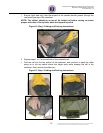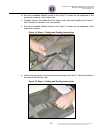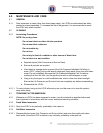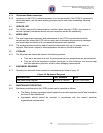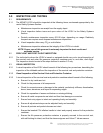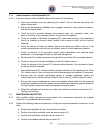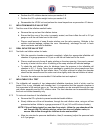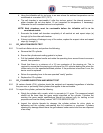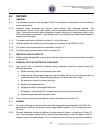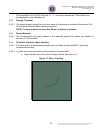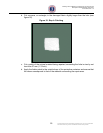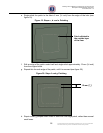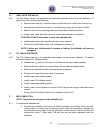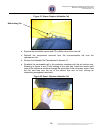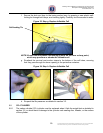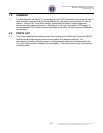
Mustang Survival MSV971 Life Preserver and Survival Vest
Description and Maintenance Instructions
9 June 2004, Rev: 1.0
6.0 REPAIRS
6.1 GENERAL
6.1.1
6.1.2
6.1.3
6.1.4
6.1.5
6.1.6
6.2.1
6.3.1
6.3.2
6.4.1
6.4.2
It is extremely important that damaged LP/SV’s are handled in accordance with the following
repair requirements.
Qualified repair personnel can perform some repairs, with adequate facilities. The
manufacturer should do all major repairs, unless otherwise authorized by Mustang Survival
Corp. This section provides some information to assist with minor or emergency repairs to the
LP/SV and related components. The inflatable cell is not repairable and should be slashed and
disposed of if damaged.
The proper work area is defined in section 4.5 of this document.
Qualified personnel should only perform repair and overhaul of the MSV971 LP/SV.
The special tools requirements are contained in section 4.7.
The reporting procedures may be found in section 4.8
6.2 IDENTIFICATION OF DEFECTS
Defects should be identified in accordance with the inspection and testing procedures detailed
in section 5.0.
6.3 SURVIVAL VEST OR PROTECTIVE CONTAINER
Any survival vest or protective container failing inspection should be repaired using the
following guidelines.
a. Replace missing parts or components from stock.
b. Clean heavily soiled areas using mild soap and water and a soft, non-abrasive nylon or
synthetic bristle brush. Other cleaning agents or solvents must not be used.
c. Re-sew worn, broken or missing stitching.
d. Replace damaged fasteners.
e. Replace corroded or damaged metal parts.
f. Damaged or underweight CO
2
cylinders must be disposed of and replaced.
g. Replace components with damaged fabric.
Those repairs requiring sewing shall be done in accordance with section 6.4.
6.4 SEWING
All repairs involving sewing should be done with sage green aramid thread, A-A-50195. Do
seam repairs, stitching, and joining using a single needle lockstitch, 8 to 10 stitches per inch
(25 mm).
Securely backstitch all ends of stitching, including breaks in thread, not less than 0.5 inch (12
mm). Any raw edges of aramid fabric, which become exposed as a result of repairs, must be
surged using a four-thread serger, 10 to 12 stitches per inch (25 mm), to prevent unravelling.
23
T
T
h
h
i
i
s
s
d
d
o
o
c
c
u
u
m
m
e
e
n
n
t
t
i
i
s
s
f
f
o
o
r
r
i
i
n
n
f
f
o
o
r
r
m
m
a
a
t
t
i
i
o
o
n
n
p
p
u
u
r
r
p
p
o
o
s
s
e
e
s
s
o
o
n
n
l
l
y
y
.
.
I
I
t
t
i
i
s
s
n
n
o
o
t
t
a
a
c
c
o
o
n
n
t
t
r
r
o
o
l
l
l
l
e
e
d
d
d
d
o
o
c
c
u
u
m
m
e
e
n
n
t
t
a
a
n
n
d
d
m
m
a
a
y
y
n
n
o
o
t
t
b
b
e
e
c
c
o
o
n
n
s
s
i
i
d
d
e
e
r
r
e
e
d
d
c
c
u
u
r
r
r
r
e
e
n
n
t
t
w
w
h
h
e
e
n
n
p
p
r
r
i
i
n
n
t
t
e
e
d
d
.
.



